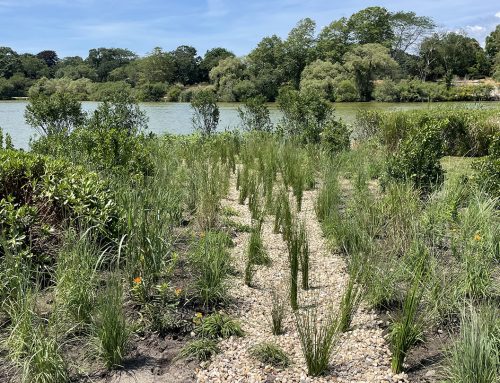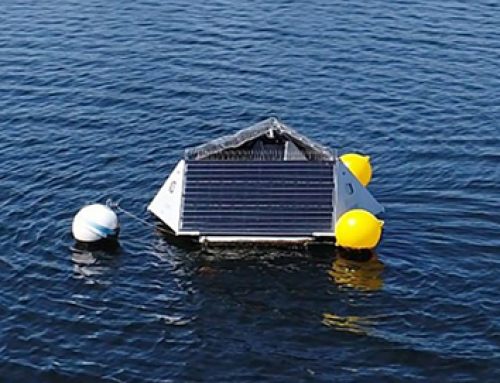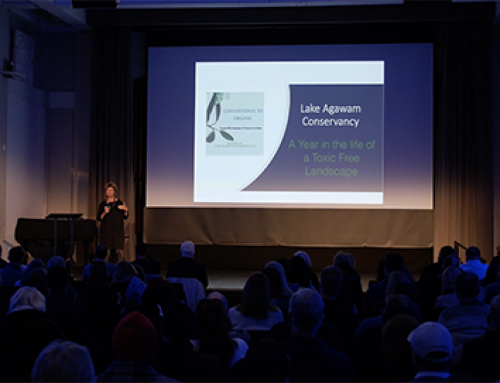A letter from Dr. Chris Gobler to Chic Voorhis, Certified Environmental Professional
Dear Chic,
I believe that it is critical that the water lily population in Lake Agawam be significantly reduced and thinned as soon as possible. These water lilies represent a serious double threat to individuals living around the lake, creating high levels of the toxin microcystin during the summer, and high levels of the toxic gas hydrogen sulfide in the fall. Although the Lake Agawam Conservancy removed the lilies in April, I believe that lily removal should also occur during the summer as lily concentrations become dense.
The removal of water lilies will have multiple benefits for Lake Agawam. First, the removal of the lilies will extract nitrogen and phosphorus from the Lake, two factors that fuel the toxic blue- green algae blooms that occur every summer in the Lake.
Second, the very dense overgrowth of water lilies represents a very serious public health threat. During the summer months, Lake Agawam is overtaken by dense blooms of blue-green algae, specifically of the genus, Microcystis, which synthesizes the potent hepatoxin, microcystin. This alga also contains gas vesicles that cause it to float to, and accumulate on, the lake surface. Prevailing winds during the summer on the south shore of Long Island are to the north, a process that pushes and accumulates floating Microcystis in the north end of the lake, but also can push the algae into coves along the western shore. When those coves are clogged with extremely dense stands of water lilies, the surface-dwelling Microcystis cannot exit for the coves. As a result, dense scums of Microcystis form in and among the water lilies at a concentration that exceeds background lake concentrations by several orders of magnitude.
Last July, I collected samples from the scum of Microcystis that had accumulated among the water lilies in the southwest region of the lake. The concentrations of blue-green algae were 100-times greater the levels in the open water and 1,000-times greater than the standard that the NYSDEC uses to close a water body for public use. In parallel, the levels of microcystin were also 100-times greater the levels in the open water and were 250-times greater the recreational criteria set by US EPA for recreating in a water body. Given the potency of microcystin as a toxin, these conditions represented a grave public health threat that was established due to the dense stands of water lilies.
A second serious health threat from the water lilies is associated with their decay. While the noxious odors associated with the decay of water lilies was once perhaps considered simply unpleasant or a nuisance, emerging medical research has revealed a significantly more serious series of medical issues. In 2018, Resiere et al., published a critical communication in the Lancet (Vol 392 December 22/29, 2018), the second most influential medical journal on the planet. The study focused on and described medical conditions associated with exposure to decaying aquatic macrophytes and the associated release of hydrogen sulphide. Conditions described included potentially fatal hypoxic pulmonary, neurological, and cardiovascular lesions and further detailed the onset of airway irritation, headaches, vestibular syndrome, memory loss, and modification of learning abilities. As an example, the paper described more than 8,000 cases of emergency room admissions with several intensive care admissions due to acute exposure to seaweed fumes in Martinique over an eight-month period when decaying seaweeds were washing into coastal communities. Having had first-hand experience with such dense accumulations of seaweeds in the Caribbean, and with the decay of water lilies on Lake Agawam, I can say the levels of hydrogen sulfide associated with each can be similar.
Given the serious public health threat that the dense stands of water lilies represent, I believe it is critical that they be not only actively harvested as a bioextraction approach, but also be significantly thinned, especially along the southwest corner of Lake Agawam. As you know, water lilies grow via rhizomes that will continually expand in an ecosystem such as Lake Agawam. The active raking and removal of water lilies and their roots will not eliminate these populations from Lake Agawam. In fact, given the inefficiencies associated with hand raking, it seems likely that any water lily roots removed during spring will regrow during the summer.
Sincerely,
Christopher J. Gobler, Ph.D.







